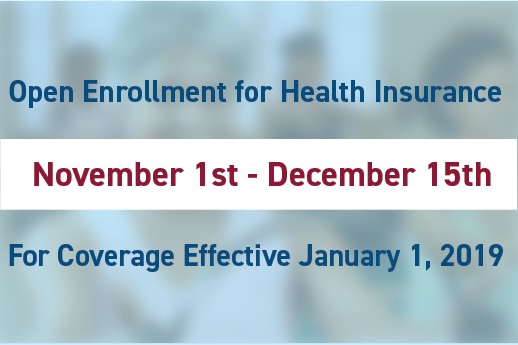Open Enrollment: What are your options?
It’s a confusing time for health care coverage in this country, and things seem to change every day. Open Enrollment starts in November, but what is it, exactly? And who is it for? Here are some pointers so you can understand your options.

What is the ACA? The ACA is the Affordable Care Act. Some call it “ObamaCare.”
What is Open Enrollment? It’s the period during which individuals can sign up for health insurance on the open market, such as through a state exchange or HealthCare.gov. Shoppers can choose between different tiers of service and prescription coverage, and every applicant is guaranteed coverage, even if the enrollee has a preexisting condition. Each state has its own rules and regulations, so there are different options at different prices depending upon where one lives.
Who needs Open Enrollment? Open Enrollment is not relevant for those covered through an employer, but Open Enrollment is for the millions of people not covered at work.
Never had health insurance? You can sign up during the enrollment period.
Want to switch plans? This is your chance. If you already have insurance and don’t want to change, you don’t have to do anything.
When is Open Enrollment? Open Enrollment is November 1st through December 15th. At only 45 days, this is down from the three months it has been in recent years. Signing up during Open Enrollment period will provide coverage effective as soon as January 1, 2019. Experts predict that the smaller enrollment window could result in fewer “healthy procrastinators” signing up, and less switching to lower tier plans by those who are already insured.
What is a Special Enrollment Period?
If you have had a “qualifying life event” (or QLE) you do not have to wait until Open Enrollment to purchase health insurance. The full list of QLEs is here, and here are the four basic categories:
- Loss of health coverage: this could be losing coverage from a change in employment, or hitting 26 and no longer being covered under a parent’s plan
- Household change: marriage or divorce, adding a family member through birth or adoption, a death in the family
- Change in residence: moving to a different ZIP code or county (this can include students), moving to or from a shelter or other transitional housing
- Other qualifying events: change in your income that affects the coverage you qualify for, becoming a U.S. citizen, leaving jail or prison
Where? Look to healthcare.gov, a health insurance specialist, or individual insurance companies for specific plans and prices.
What next? Be prepared for this year’s Open Enrollment or your Special Enrollment Period by noting the deadlines, your typical heath care usage, names of important doctors you’d like in your network, and by fine-tuning your budget and whether you prefer a higher deductible with lower premiums or a lower deductible with higher premiums. A little planning can go a long way.


